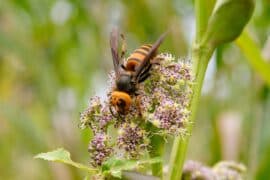Black-and-white ruffed lemur
(Varecia variegata)

Description
The black-and-white ruffed lemur (Varecia variegata) is an endangered species of ruffed lemur, one of two which are endemic to the island of Madagascar. Despite having a larger range than the red ruffed lemur, it has a much smaller population that is spread out, living in lower population densities and reproductively isolated. It also has less coverage and protection in large national parks than the red ruffed lemur. Three subspecies of black-and-white ruffed lemur have been recognized since the red ruffed lemur was elevated to species status in 2001. Together with the red ruffed lemur, they are the largest extant members of the family Lemuridae, ranging in length from 100 to 120 cm (3.3 to 3.9 ft) and weighing between 3.1 and 4.1 kg (6.8 and 9.0 lb). They are arboreal, spending most of their time in the high canopy of the seasonal rainforests on the eastern side of the island. They are also diurnal, active exclusively in daylight hours. Quadrupedal locomotion is preferred in the trees and on the ground, and suspensory behavior is seen during feeding. As the most frugivorous of lemurs, the diet consists mainly of fruit, although nectar and flowers are also favored, followed by leaves and some seeds. The black-and-white ruffed lemur has a complex social structure and is known for its loud, raucous calls. It is unusual in that it exhibits several reproductive traits typically found in small, nocturnal lemurs, such as a short gestation period, large litters and rapid maturation. In captivity, they can live up to 36 years. Together with the red ruffed lemur, the species is the largest extant member of the family Lemuridae, ranging in length from 100 to 120 cm (3.3 to 3.9 ft) and weighing between 3.1 and 4.1 kg (6.8 and 9.0 lb). The black-and-white ruffed lemur is always both black and white; the general color patterns do not usually vary. Abdomen, tail, hands and feet, inner limbs, forehead, face and crown are black. The fur is white on the sides, back, hind limbs and on the hindquarters. Males and females are alike. The species inhabits the eastern rainforests of Madagascar. It occurs at low to moderate altitudes, in primary forests with tall and mature trees, and by preference deep inside contiguous blocks of vegetation, although patchy forests are made use of if necessary.
Taxonomic tree:







